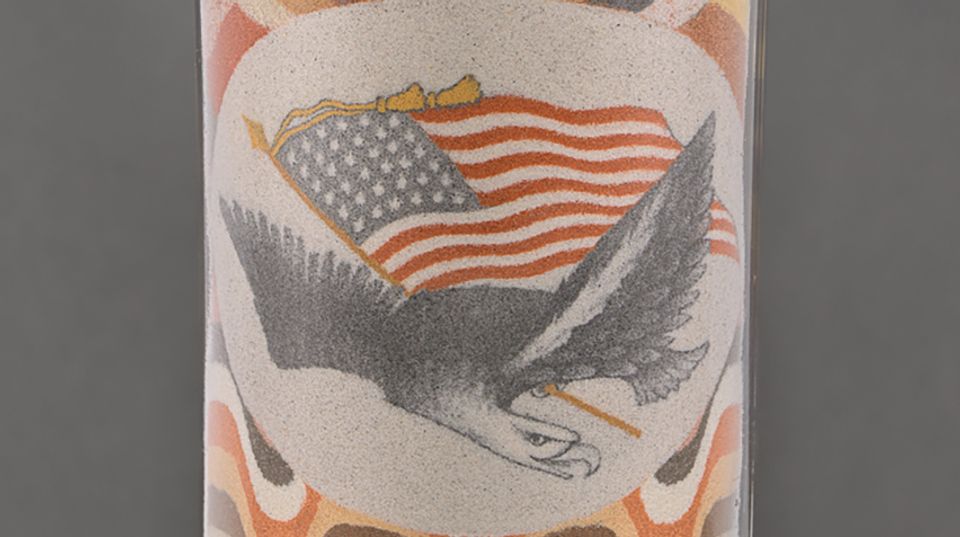Artwork Details
- Title
- Untitled (The Mary Heye Bottle)
- Artist
- Date
- 1883
- Location
- Dimensions
- 8 1⁄2 × 2 3⁄4 in. (21.6 × 7.0 cm) diam.
- Credit Line
- Gift from the estate of Mary Brashier, granddaughter of Mary Heye
- Mediums Description
- naturally colored rock sand in pharmacy bottle
- Subjects
- Object — flower
- Homage
- Object — other — container
- Object Number
- 2021.69
Artwork Description
Sand bottles are made, quite literally, a grain of sand at a time. The grains are stacked and pushed around until layers and colors form a desired design, which is then pressured into place with a waxed stopper. Part painting, part sculpture, the resulting artform is unique and often quite astonishing.
Andrew Clemens lived his entire life in Iowa's Mississippi River Valley. He lost his hearing during a childhood illness and thereafter attended the Iowa State School for the Deaf in Council Bluffs. There he discovered an aptitude and affinity for handcrafts. During summers at home, he collected pieces of colored sandstone in the Pictured Rocks area of Iowa's Pikes Peak State Park then ground them into a palette of earth-toned colors. His sand bottles began as simple designs, becoming increasingly intricate over time and taking as much as a year to complete. Ultimately, Clemens shaped a profession of making customized sand bottles on commission; The Mary Heye Bottle, made at the zenith of his career, was one of these commissions. One side bears the honoree's name, the year the bottle was made, and a detailed floral arrangement. The other side has a flying eagle carrying the United States flag, and an array of precise geometric ornamentation. Clemens produced hundreds of sand bottles but only a small number survive.
Related Posts
















